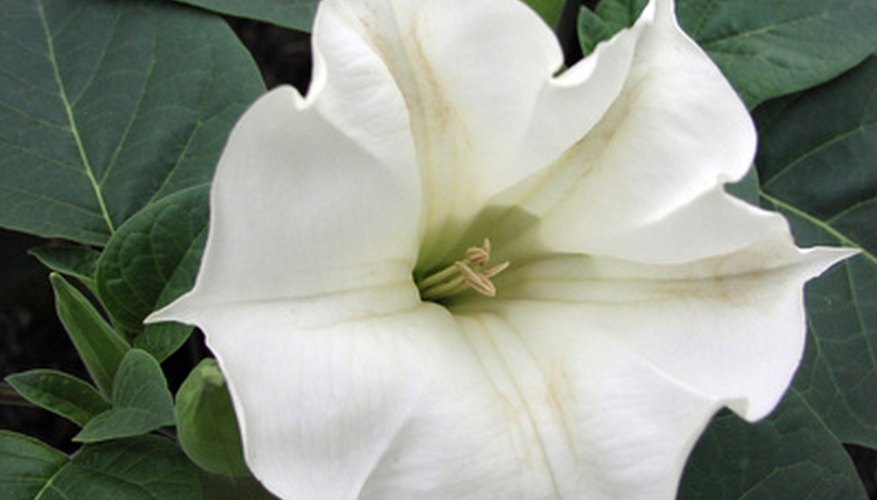The moonflower is a unique plant that only blooms at night, giving it the name moonflower. This vine is a perennial but it is frequently used as an annual. Moonflower growth is slow throughout most of the year but the rate of growth increases dramatically in the hottest summer months.
About the Moonflower
The moonflower (Ipomoea alba) is a perennial plant that sometimes grows as a vine. It can mature to a height of 10 to 20 feet. Because these plants bloom only at night, pollination is aided by moths, not bees. This plant is very similar to morning-glory plants in appearance but their blooming habits are different.
- The moonflower (Ipomoea alba) is a perennial plant that sometimes grows as a vine.
- This plant is very similar to morning-glory plants in appearance but their blooming habits are different.
Climate
The moonflower grows well in well-drained loamy soils and is native to tropical regions. It is even native to southern portions of the state of Florida. It prefers ample water and fertile soils to maximise growth. For best results, plant the moonflower in direct sunlight, as it does not produce as many flowers when grown in shaded areas. Moonflowers thrive in temperatures ranging between 15.6 and 21.1 degrees Celsius.
- The moonflower grows well in well-drained loamy soils and is native to tropical regions.
Foliage
The leaves of the moonflower vine are heart-shaped and measure 8 inches long. Their rich dark green colour provides contrast to the white flowers. The vine is coarse in texture and grows slowly along walls or on trellises.
Flowers
The moonflower produces greenish-white flowers with a pleasant fragrance, atop stems that are 2 to 6 inches long. Each flower features ½-inches-long sepals and tubes that are 3 to 6 inches long. When open, the flower measures 3 to 6 inches wide The flowers bloom in the middle of summer nights and typically close by dawn, although some have been known to stay open until noon the following day.
Planting
Divide the roots of the plant to raise additional moonflowers. Cuttings should be taken from ripened roots. Soaking seeds in sulphuric acid prior to planting can help yield larger, stronger plants and promote seeding. In southern landscapes, moonflowers can be planted directly outdoors. In more northern climates, start the seeds indoors and move the seedlings outdoors after the last frost of the season.
- Divide the roots of the plant to raise additional moonflowers.
- In southern landscapes, moonflowers can be planted directly outdoors.
